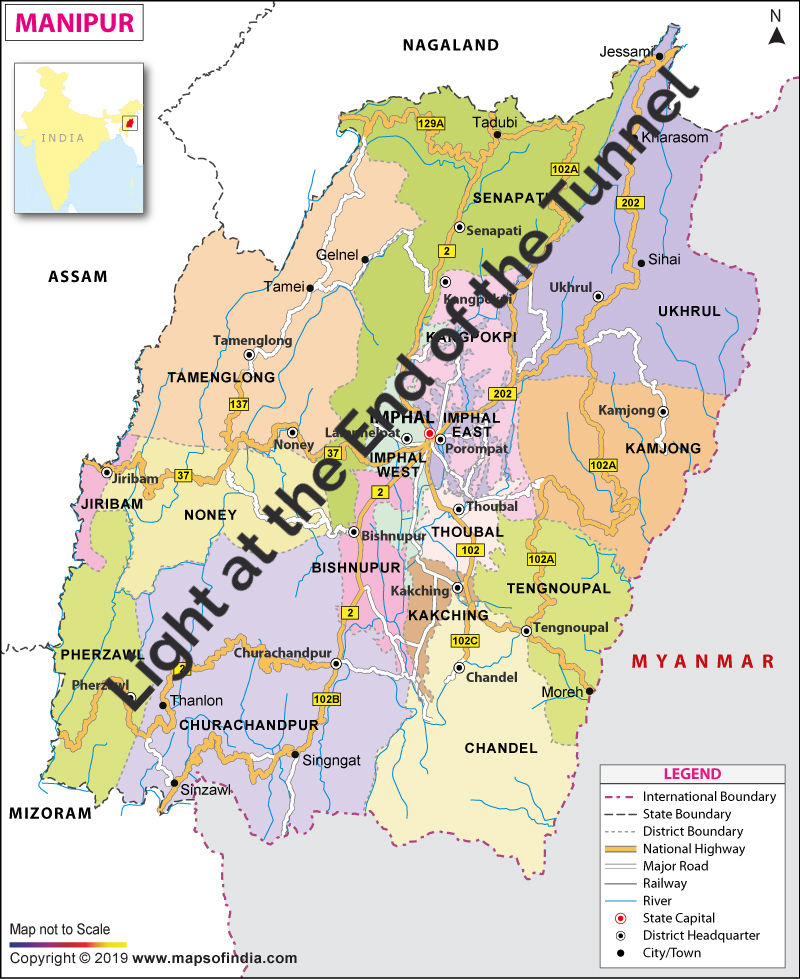Manipur Stability: Review of Security and Reconciliation Vectors
- Security Risks Research
- Dec 17, 2023
- 3 min read

Security and reconciliation remain the two strands of stability in Manipur. Developments indicate gaps in both vectors. Abundance of arms available with the community and militant groups, cross border access to militant groups to and fro from Myanmar are security issues while on the reconciliation process tangible efforts to bring together communities – Meitei and Kuki appear to be limited on the other hand high level statements may widen the chasm.
Thus, it was not surprising that Eastern Army Commander Lt Gen R.P Kalita who heads the military mission in Manipur at the strategic level has very clearly indicated that there is no time limit which can be set for resolving the security crisis in Manipur.
Lt Gen R.P Kalita on December 16th indicated that peace is gradually returning to Manipur. “The Assam Rifles was called in after violence erupted in Manipur on May 3. We worked in a synergised manner with state police and Central Armed Paramilitary Forces (CAPF) and succeeded in bringing about some semblance of normalcy in the next 7-10 days. The law-and-order situation was brought largely under control,” the General Officer Commanding-in-Chief of the Eastern Command said while addressing the media on the sidelines of a solemn wreath laying ceremony at Vijay Smarak in Fort William, Kolkata, to mark India’s victory against Pakistan in the 1971 War that led to the liberation of Bangladesh.
Outlining the security challenges ahead he said, that large number of weapons in the hands of both communities and the instability in Myanmar, across the border, has had its impact. “There are possibilities of sporadic incidents but all efforts are on to restore normalcy. While a reconciliation process is on from the governments’ side, our objective is to bring down violence,” Lt Gen Kalita said.
Continuance of violence is evident as on December 4, 2023, 13 people belonging to the Meitei community, suspected to be cadres of the People’s Liberation Army (PLA), were killed in and inter group fight between two militant groups as per officials quoted in the SAIR Weekly Assessments & Briefings Volume 22, No.25, December 11, 2023
Considerable time and efforts would have to be undertaken to bring the communities on one board and prevent the extremist elements in these to carry out attacks on the other people. At the same time there are some militant groups of both the communities who are active which the military will have to neutralize. Pace of recovery of arms and munitions is also slow for which intelligence is not forthcoming and a major effort to induce at least locals for surrendering the same may be essential.
On the reconciliation process Kalita said, “There are a lot of historic issues and legacies involved between the two communities and such things take time,” Lt Gen Kalita said. Thus while violence in the state has come down considerably the inter ethnic strife continues with differences between the Meitei and the Kuki communities. Resolution of the same is a political and social issue which has to be tackled by the leadership at that level while the military may have limited role in the same.
Weekly Assessments & Briefings, Volume 22, No.25, December 11, 2023 notes based on information released by the Manipur Government to a Supreme Court-appointed Committee headed by former Chief Justice of Jammu and Kashmir (J&K) High Court, Gita Mittal, 166 civilians killed in the Manipur violence till October 7, at least 98 were identified as members of the Kuki-Zo community, while 67 hailed from the Meitei community. 19 women from both communities (Kuki-Zo and Meitei) had been killed in the ethnic violence till October 7. When communities suffer such violence, the process of reconciliation will be inevitably delayed.
At the same time Weekly Assessments & Briefings Volume 22, No.25, December 11, 2023 notes, efforts are made at the highest level in Manipur to pin the blame exclusively on the Kuki community.
Evidently there do not appear to be any tangible efforts for inter community reconciliation give that differences have widened considerably during the past seven months or so.
Thus, a meeting point for the communities to accept the others point of view will require extensive efforts and half measures are not likely to make a tangible difference, while attempts to increase the divide made at whatever level need to be condemned.



Comments